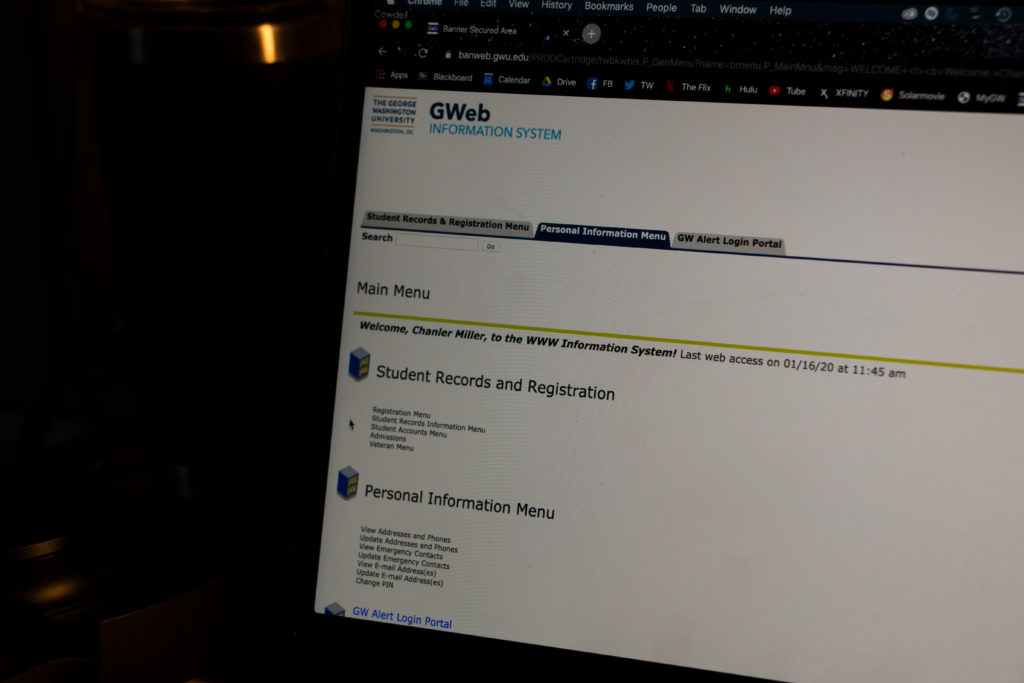Two years after announcing that GW will drop Banweb, officials are continuing to explore options to replace the administrative application.
Division of Information Technology staff announced in January 2018 that the University would adopt a new “management system” in two years after the company that created Banner, the system behind Banweb, announced it would stop updating the software. But as GW approaches that deadline, Chief Information Officer Loretta Early said IT staff are still engaged in a “multi-year project” to explore options to replace Banner for all of GW’s needs.
“As part of our technology modernization efforts, we are reviewing the Banner roadmap with our campus partners to consider future functionality for implementation,” she said in an email. “This is viewed as an interim step as we monitor the maturity of student system solutions entering the market.”
IT department staff are serving on working groups created to further the University’s strategic initiatives to collect feedback to guide what product to replace Banweb, and are involved in more than 120 “business process review efforts,” Early said.
“We anticipate being able to leverage recommendations from the working groups to help identify key themes and common needs and inform the University’s roadmap for technology modernization,” she said in an email.
Early added that since the announcement in 2018, officials have continued to make changes to Banweb to support user accessibility. IT staff enabled faculty, staff, students and alumni who graduated starting in May 2019 to obtain login access to Banweb using their NetID and will phase out the ability for users to sign in using their GWID and a six-digit PIN this spring, she said.
Early said the IT department is working on a “completely new experience” for class registration – which will include a more intuitive user interface and “process enhancements” – for release this summer.
Early declined to give a timeline for replacing Banweb moving forward.
Information system experts said upgrades to technology infrastructure are necessary to reinforce database security and to ensure the software stays up-to-date with current technology.
Basiyr Rodney, an associate professor of education technology at Webster University in Missouri, said administrators should select a student information system to use bearing in mind the users who will engage with the system. He said an ideal system should be able to handle every part of higher education administration.
“There is a current trend for some of these services to be packaged and sold by smaller, single or limited function, applications,” he said in an email. “I think that this has been a poor trend because it increases learning time and management time for the institution’s stakeholders.”
Rodney said any system used by a university should be capable of processing requests related to student management, archiving data and administrative functions. The current Banner system allows students to register for courses, track financial aid, pay bills and view employment decisions, among other functions.
He said information systems should provide “improved services” and “personalized information” to students while allowing administrators to plan courses according to student needs.
Rodney added that shifting from one system to another should ideally take 12 to 18 months but could be accompanied by high costs and a long adjustment period.
“It takes a great deal of time and investment hours to train faculty, staff and administrators to learn to use and manage these systems,” he said. “The learning time will lead to short-run time losses and inefficiencies.”
Bruce Barker, the president of Information Systems Experts – a technology support company – said higher education administrators should keep software current by upgrading it periodically every year and a half to two years to spread costs out.
“You’re doing incremental upgrades instead of having to put it off and do monumental one later off,” he said.
Barker said officials may lose out on needed security patches if they do not make periodic updates. Officials have previously said the company developing Banner will stop making system upgrades.
“In this day and age, security has to be the number one thing on your list,” he said. “You can’t expose data.”





